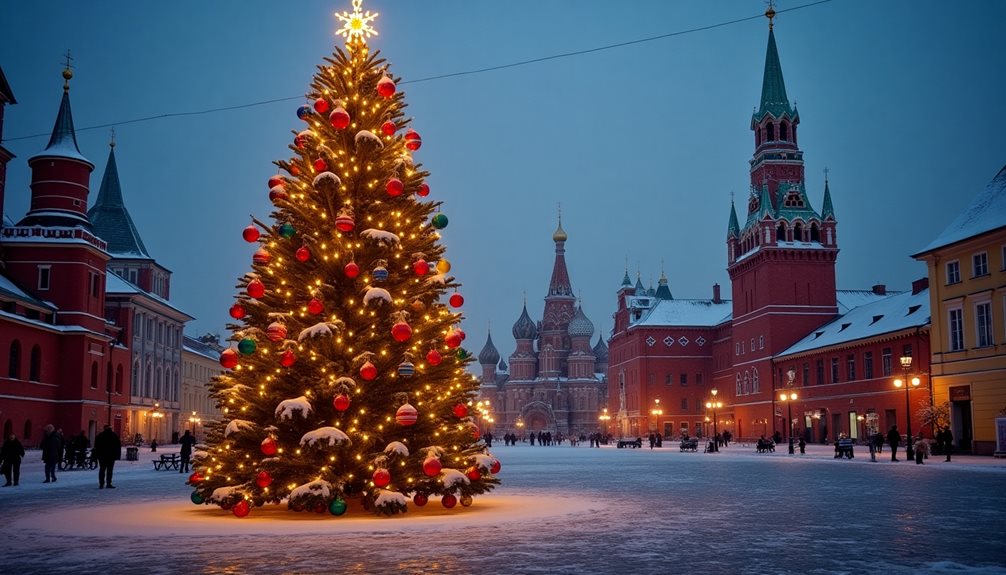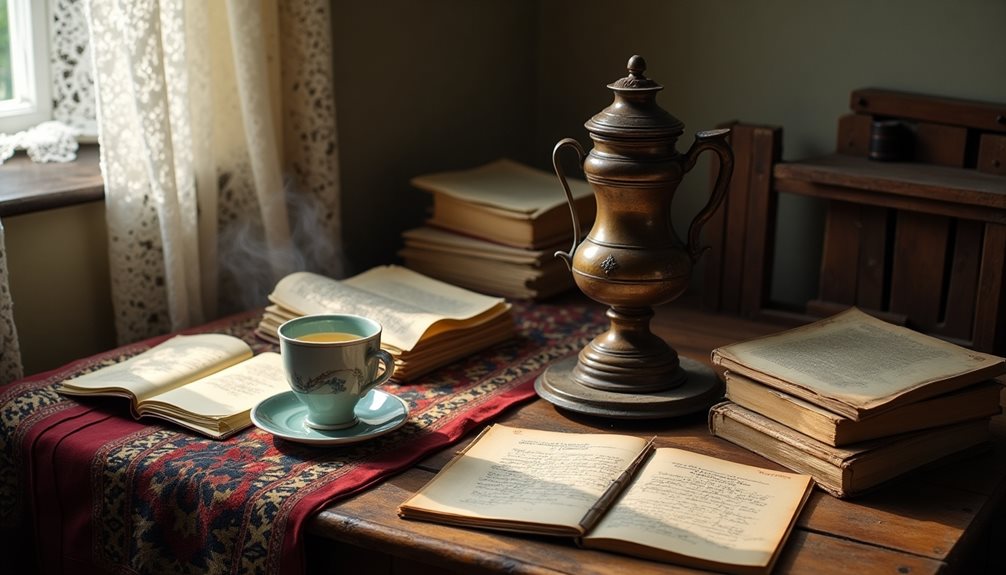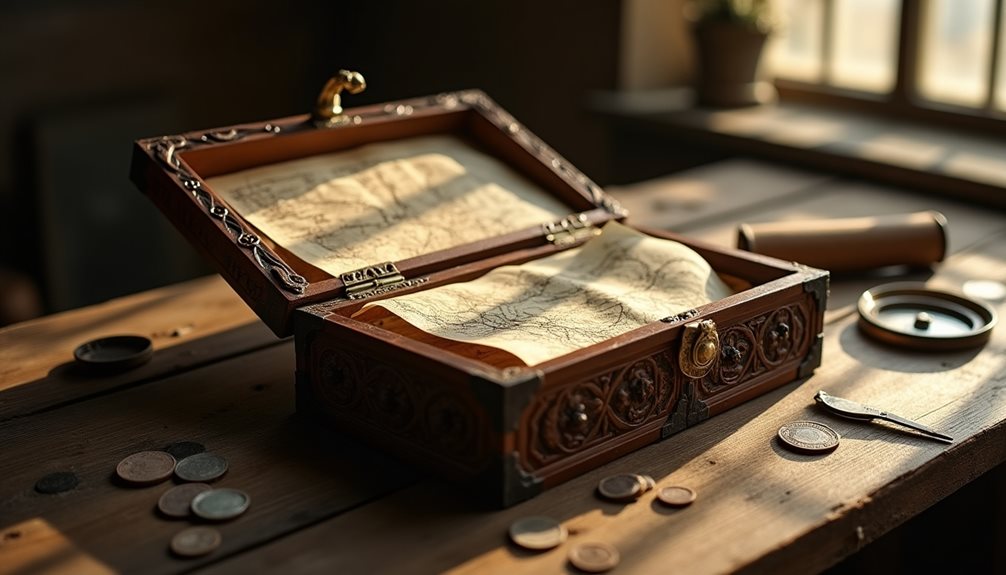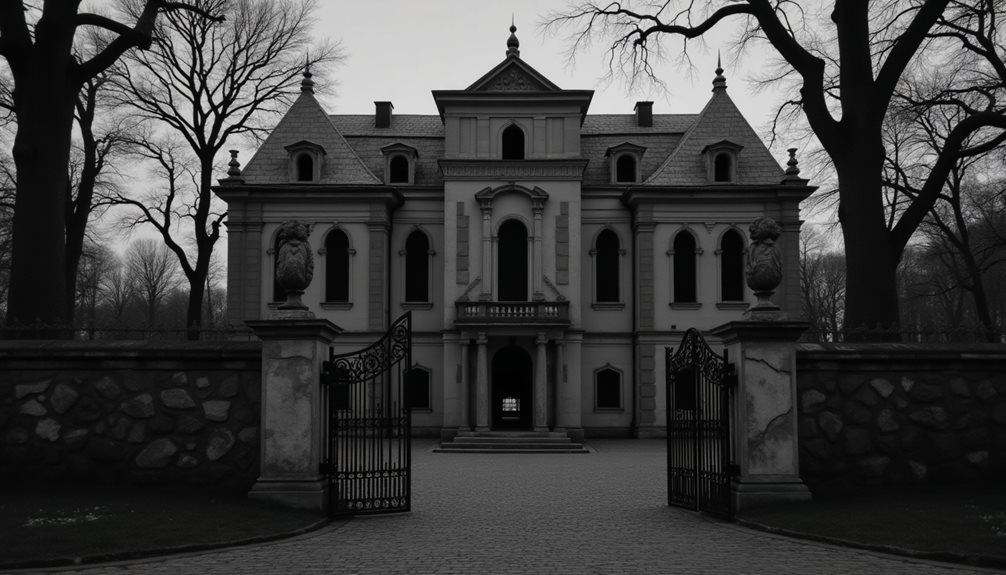Have you ever marveled at the Church of the Savior on Spilled Blood in St. Petersburg? Constructed where Emperor Alexander II was fatally wounded, it’s more than just a religious sanctuary. Completed in 1907, its onion domes, intricate mosaics, and ornate architecture define the Russian Revival style. With over 7,500 square meters of mosaics, it’s a testament to Russian art and culture. But, there’s a deeper narrative waiting to be uncovered, a story that’s as compelling as its magnificent aesthetics. So, are you ready to uncover the secrets held within its grand walls?
Historical Significance of the Church
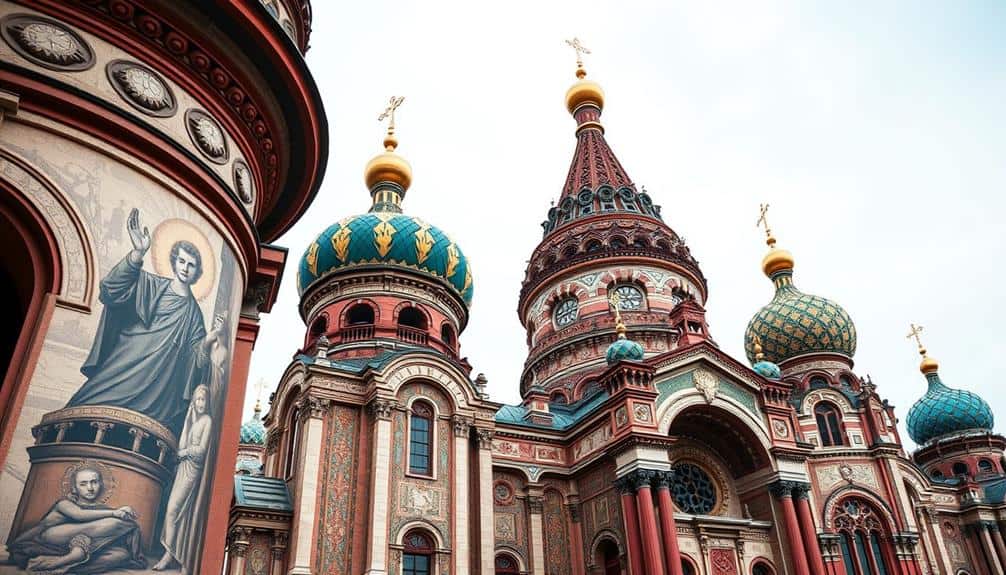
One can’t help but appreciate the rich history of the Church of the Savior on Spilled Blood. You’re walking in the heart of St. Petersburg, Russia, where every stone whispers stories of a bygone era.
Built on the spot where Emperor Alexander II was assassinated, this Church stands as a testament to freedom and resilience.
In the late 19th century, you’d find the Russian people yearning for change, for the freedom to live without the oppressive yoke of autocratic rule.
Alexander II, the liberator Tsar, answered this call by emancipating the serfs, a move that shook the foundations of the Russian society. But not all were in favor of his reforms and in 1881, he was fatally wounded by terrorists.
The Church, a dazzling mosaic of history and culture, was erected in his honor.
You can’t help but feel a sense of respect, not just for the man it represents, but also for the indomitable spirit of a people seeking freedom. It’s a symbol of their struggle, their hope, and their triumph.
Architectural Details and Design
The Church of the Savior on Spilled Blood’s architecture is nothing short of breathtaking. You’ll notice its distinct Russian Revival style, a bold departure from the Western architectural trends of its time.
This was an intentional nod to the nation’s past, a symbol of Russia’s artistic freedom and independence.
As you approach, the church’s five onion domes, each one intricately detailed and gilded, command your attention. They’re not just for show—they’re an homage to the traditional Russian Orthodox churches.
Underneath, you’ll see a flamboyant explosion of color, texture, and detail that adorns the exterior walls. It’s an aesthetic feast that can’t be rushed; you’ve to savor it, bit by bit.
Inside, the design becomes even more impressive with soaring vaulted ceilings, ornate columns, and elaborate iconostasis that sets the stage for a deeply spiritual experience.
It’s a place where the spirit of Russian artistry thrives, unrestricted and unapologetic. So, when you come, don’t just look. Feel the freedom that this architectural masterpiece embodies.
And remember, you’re not just visiting a church—you’re stepping into a piece of Russia’s proud, unfettered past.
The Church’s Vibrant Mosaics
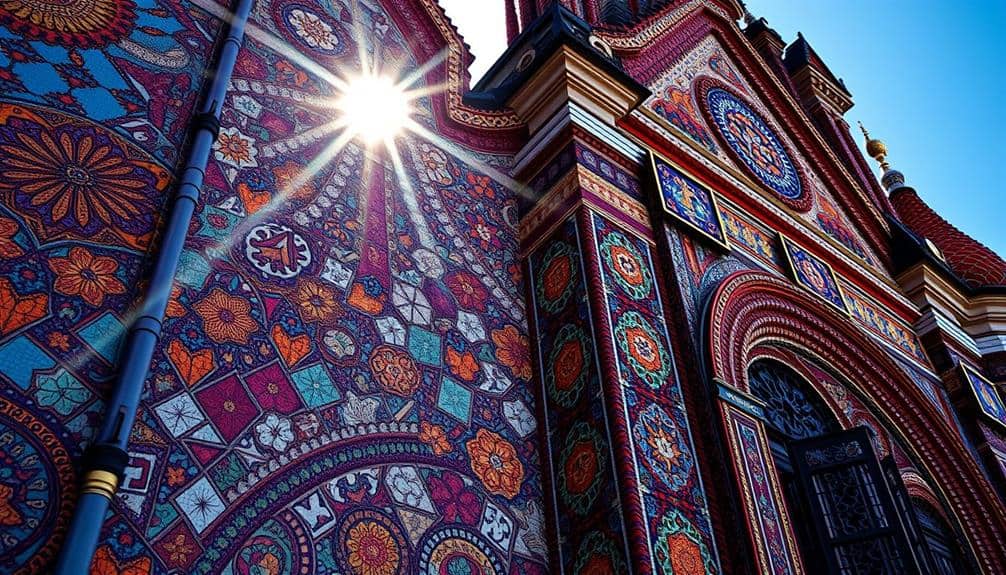
Almost 7,500 square meters of the church’s interior is embellished with vibrant mosaics, making it feel like you’ve stepped into a living, breathing work of art.
You’re not just an observer here, you’re a participant in a grand historical narrative, pieced together by countless tiny fragments of colored glass.
As you wander through this incredible space, you’ll encounter scenes from the Bible, depictions of saints and Russian monarchs, and intricate geometric patterns.
It’s a visual feast that sparks a sense of freedom.
You’re free to explore, to interpret, to marvel at the sheer amount of effort and dedication it must have taken to create this.
Look closer.
Each mosaic is a story in itself.
You can’t help but wonder about the craftsmen who placed each piece with such precision, forging a connection across centuries.
The sheer scale is awe-inspiring, but it’s the minutiae that really captures your imagination.
The Story Behind Its Name
While you may find yourself captivated by the church’s stunning interior, it’s worth delving into the poignant history behind its name.
The Church of the Savior on Spilled Blood gets its name from the tragic event that occurred on that very spot in 1881. Tsar Alexander II, known for his emancipation of the serfs and reforms that gave the Russian people a taste of freedom, was assassinated here.
The Tsar was riding in his carriage along the embankment when a bomb was thrown at his feet. Despite the serious injury, Alexander II managed to escape the carriage, only to be fatally wounded by a second bomber.
The blood of the liberator Tsar quite literally spilled onto the cobblestones.
It’s in this exact location that his son, Alexander III, decided to build this church as a memorial. You might feel a sense of reverence stepping onto the same ground where a leader who championed freedom met his end.
The Role in Soviet Era

Soviet rule cast a shadow over the Church of the Savior on Spilled Blood, transforming it from a sacred monument into a utilitarian warehouse.
You see, during this time of ideological fervor, religion was seen as an obstacle to progress.
The Soviets, in their quest for a new world order, turned the church into a storage for vegetables. Can you imagine the ornate mosaics and sacred icons, meant to inspire reverence and awe, now witnessing the mundane transactions of a grocery warehouse?
But don’t let this dishearten you.
In fact, it’s a testament to the resilience of the human spirit.
Throughout this challenging period, the church stood as a silent witness to history, a beacon of hope for the faithful who yearned for spiritual freedom.
It’s a stark reminder of how the tides of time can shift but can never erase the intrinsic value of our shared heritage.
Restoration and Preservation Efforts
Post-Soviet Russia embarked on a painstaking journey of restoring the Church of the Savior on Spilled Blood, a testament to the nation’s commitment to preserving its cultural heritage. You’ll appreciate the magnitude of this endeavor when you discover that the Church had suffered extensive damage during World War II and the Soviet era.
Restoration work started in 1970 and took more than 27 years to complete, it wasn’t a task taken lightly. You’d be amazed to learn that each mosaic was cleaned, restored, or replaced by hand.
This mammoth task was made possible by a dedicated team of artists and historians who worked tirelessly to ensure the Church regained its original splendor.
You can see the embodiment of freedom in the preservation efforts. Each painstakingly restored mosaic, each revived detail, speaks volumes about a nation’s resilience, its capacity for renewal, and its devotion to freedom and cultural identity.
When you visit, you’re not just admiring a building; you’re witnessing a symbol of liberation, a testament to the enduring spirit of a people who wouldn’t let their history be erased. It’s a beacon of hope and an emblem of the freedom you desire.
Must-See Highlights Inside
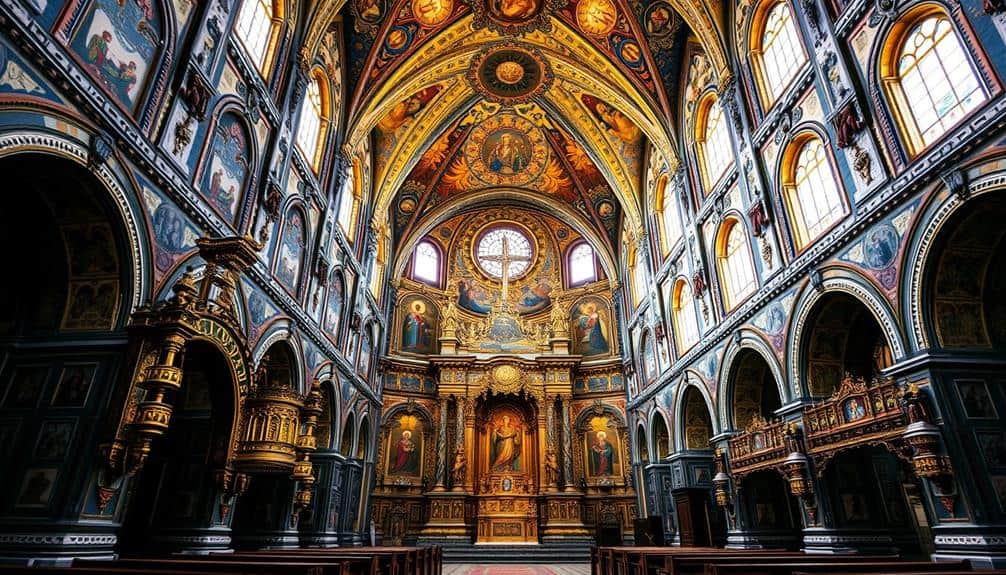
Stepping into the Church of the Savior on Spilled Blood, you’re immediately enveloped by a world of intricate mosaics and grandeur. Your eyes will be drawn to the main dome, shimmering with the image of Christ Pantocrator. This is the world’s largest mosaic of its kind, a spectacle you can’t afford to miss.
Next, feast your eyes on the Royal Gates, a masterpiece of art and craftsmanship. They’re the entrance to the altar and their intricate design is a testament to the high art of the period. You’re free to lose yourself in the mesmerizing details, letting them transport you back in time.
Don’t forget to visit the four smaller domes, each adorned with stunning mosaics of biblical scenes. And lastly, be sure to appreciate the iconostasis, a wall of religious icons and frescoes that separates the nave from the sanctuary.
Every corner of this church tells a story, an echo of a bygone era, waiting for you to discover.
It’s a place where history and art blend seamlessly, inviting you to immerse yourself in its beauty without any restraint.
Visitor Information and Tips
Before you embark on your journey to the Church of the Savior on Spilled Blood, it’s important to have some key information at hand.
This iconic site is open from 10:30 am to 6 pm daily, except on Wednesdays. It’s busiest during the summer months, so if you’re not a fan of crowds, plan your visit for the off-peak season.
Getting there’s a breeze. It’s situated in the heart of St. Petersburg, and easily accessible by metro, bus, or on foot if you’re staying nearby.
The nearest metro station is Nevsky Prospekt.
You’ll need to buy a ticket to enter, but it’s worth every penny. You can purchase them on site or online to skip the queues.
The cost is around 250 rubles, but don’t forget to check the current rates.
Remember to dress appropriately as it’s a place of worship.
This means no shorts or sleeveless tops. Be respectful of the locals who come here to pray.
Lastly, don’t miss the opportunity to hire an audio guide. It’s the best way to learn about the intricate mosaics and the history of the church without feeling rushed.
With these tips, you’re all set for an enlightening visit!
Impact on Russian Culture
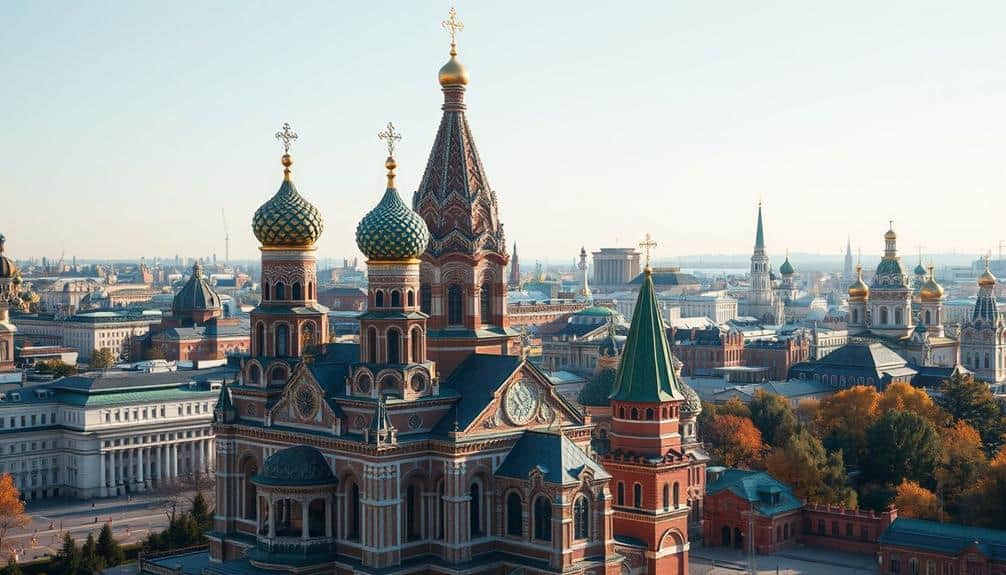
Undeniably, the Church of the Savior on Spilled Blood has had a profound impact on Russian culture. You can’t miss its colorful onion domes and intricate mosaics, a testament to the nation’s rich artistic heritage. It’s not just an architectural masterpiece, but a symbol of Russia’s resilience and strength.
Its construction was a statement of defiance, a bold proclamation of Russian identity during a time of political turmoil.
You’d realize that it’s not merely a building, but a beacon of cultural pride. And even today, it continues to influence Russian art, architecture and literature.
Now, imagine stepping inside.
You’d be transported to another era, a time when Russia was striving to assert its cultural identity. You can feel the echoes of that struggle in every mosaic, every stone, every dome.
And that’s the beauty of it.
It’s a testament to the power of art and architecture in shaping a nation’s identity.
Conclusion
So, don’t miss out on the Church of the Savior on Spilled Blood on your St. Petersburg visit. It’s not just a church; it’s a symbol of Russia’s history, art, and resilience. From its breathtaking mosaics to its poignant backstory, this church will leave you awestruck. Remember, it’s more than just a sightseeing spot, it’s a cultural treasure that has endured time, reflecting the rich tapestry of Russian culture. Experience it for yourself!


